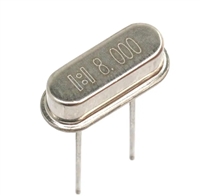Installation
Transmit Fault (Tx_Fault)
The AFBR-570xZ can be installed in or removed from any A catastrophic laser fault will activate the transmitter signal,
MSA-compliant Pluggable Small Form Factor port TX_FAULT, and disable the laser. This signal is an open
regardless of whether the host equipment is operating or collector output (pull-up required on the host board). A
not. The module is simply inserted, electrical-interface first, low signal indicates normal laser operation and a high
under finger-pressure. Controlled hot-plugging is ensured signal indicates a fault. The TX_FAULT will be latched high
by 3-stage pin sequencing at the electrical interface. This when a laser fault occurs and is cleared by toggling the
printed circuit board card-edge connector is depicted in TX_DISABLE input or power cycling the transceiver. The
Figure 2.
transmitter fault condition can also be monitored via the
2-wire serial interface (address A2, byte 110, bit 2).
As the module is inserted, first contact is made by the
housing ground shield, discharging any potentially
component-damaging static electricity. Ground pins
engage next and are followed by Tx and Rx power supplies.
Finally, signal lines are connected. Pin functions and
sequencing are listed in Table 2.
Eye Safety Circuit
The AFBR-570xZ provides Class 1 eye safety by design
and has been tested for compliance with the requirements
listed in Table 1. The eye safety circuit continuously
monitors optical output power levels and will disable the
transmitter and assert a TX_FAULT signal upon detecting
an unsafe condition. Such unsafe conditions can be created
by inputs from the host board (Vcc fluxuation, unbalanced
code) or faults within the module.
Transmitter Section
The transmitter section includes the Transmitter Optical
Subassembly (TOSA) and laser driver circuitry. The TOSA,
containing an 850 nm VCSEL (Vertical Cavity Surface
Emitting Laser) light source, is located at the optical
interface and mates with the LC optical connector. The
TOSA is driven by a custom IC, which converts differential
logic signals into an analog laser diode drive current. This
Tx driver circuit regulates the optical power at a constant
level provided the data pattern is DC balanced (8B10B
code for example).
Receiver Section
The receiver section includes the Receiver Optical
Subassembly (ROSA) and amplification/quantization
circuitry. The ROSA, containing a PIN photodiode and
custom trans-impedance preamplifier, is located at the
optical interface and mates with the LC optical connector.
The ROSA is mated to a custom IC that provides post-
amplification and quantization. Also included is a Loss Of
Signal (LOS) detection circuit.
Transmit Disable (Tx_Disable)
The AFBR-570xZ accepts a TTL and CMOS compatible
transmit disable control signal input (pin 3) which shuts
down the transmitter optical output. A high signal
implements this function while a low signal allows normal
transceiver operation. In the event of a fault (e.g. eye safety
circuit activated), cycling this control signal resets the
module as depicted in Figure 6. An internal pull-up resistor
disables the transceiver transmitter until the host pulls
the input low. Host systems should allow a 10ms interval
between successive assertions of this control signal.
Tx_Disable can also be asserted via the 2-wire serial
interface (address A2h, byte 110, bit 6) and monitored
(address A2h, byte 110, bit 7).
Receiver Loss of Signal (Rx_LOS)
The Loss Of Signal (LOS) output indicates an unusable
optical input power level. The Loss Of Signal thresholds
are set to indicate a definite optical fault has occurred
(e.g., disconnected or broken fiber connection to
receiver, failed transmitter, etc.).
The post-amplification IC includes transition detection
circuitry which monitors the ac level of incoming optical
signals and provides a TTL/CMOS compatible status
signal to the host (pin 8). An adequate optical input
results in a low Rx_LOS output while a high Rx_LOS
output indicates an unusable optical input. The Rx_LOS
thresholds are factory-set so that a high output indicates
a definite optical fault has occurred. For the AFBR-5705Z
family, Rx_LOS can also be monitored via the 2-wire
serial interface (address A2h, byte 110, bit 1).
The contents of A2h, byte 110, bit 6 are logic OR’d with
hardware Tx_Disable (pin 3) to control transmitter
operation.
3






 资料手册解读:UC3842参数和管脚说明
资料手册解读:UC3842参数和管脚说明

 一文带你了解无源晶振的负载电容为何要加两颗谐振电容CL1和CL2
一文带你了解无源晶振的负载电容为何要加两颗谐振电容CL1和CL2

 玻璃管保险丝与陶瓷管保险丝:区别与替代性探讨
玻璃管保险丝与陶瓷管保险丝:区别与替代性探讨

 PCF8574资料解读:主要参数分析、引脚说明
PCF8574资料解读:主要参数分析、引脚说明
